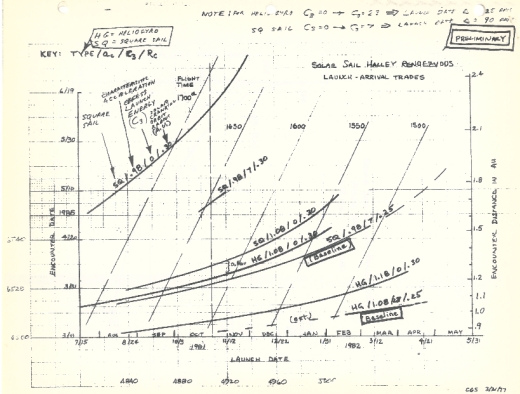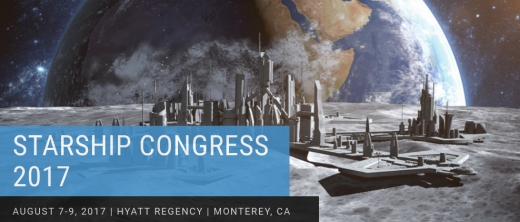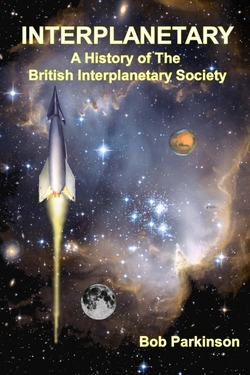Centauri Dreams
Imagining and Planning Interstellar Exploration
The Sounds of Europa
Although there are no plans at present to send a lander to Europa, we continue to work on the prospects, asking what kind of operations would be possible there. NASA is, for example, now funding a miniature seismometer no more than 10 centimeters to the side, working with the University of Arizona on a project called Seismometers for Exploring the Subsurface of Europa (SESE). Is it possible our first task on Europa’s surface will just be to listen?
The prospect is exciting because what we’d like to do is find a way to penetrate the surface ice to reach the deep saltwater ocean beneath or, barring that, any lakes that may occur within the upper regions of the ice shell. The ASU seismometer would give us considerable insights by using the movements of the ice crust to tell us how thick it is, and whether and where ocean water that rises to the surface can be sampled by future landers.

Image: Close-up views of the ice shell taken by the Galileo spacecraft show uncountable numbers of fractures cutting across each other. Reddish colors (enhanced in this view) come from minerals in ocean water leaking through the shell and being bombarded by Jupiter’s radiation. The ASU-designed seismometer would land on the shell and detect its movements. Credit: NASA/JPL-Caltech.
Europa’s story is all about tides. The moon (a bit smaller than our own Moon) is constantly being tugged by the large Galilean moons Io and Ganymede, preventing its orbit from circularizing completely. In turn, that small orbital eccentricity allows Jupiter to stress the ice shell. Alyssa Rhoden is an ASU geophysicist working on the SESE project. She points out in this ASU news release that seismometers can tell us how active the ice shell is.
Acknowledging that we’re dealing with a geologically young surface — probably between 50 to 100 million years old, based on crater counts and resurfacing — Rhoden adds: “It may have undergone an epoch of activity early in that period and then shut down.” Equally plausible is the idea that even today the shell is undergoing uplifts and fracturing from below, with the opportunity for ocean water to reach the surface. Recent observations of plumes on Europa, based on Hubble data from 2012 and 2016, support the idea.
Seismometers would help us detect ongoing activity in the shell. ASU envisions a seismometer mounted on each leg of a lander — four to six seismometers in all, depending on lander design. These would be driven deep into the ground, avoiding the kind of loose surface materials that would isolate the instruments from seismic waves passing through the shell. And that calls for the kind of rugged instrument ASU is building. Able to operate at any angle, the prototype can survive landings hard enough to ensure deep penetration for each seismometer.
Edward Garnero is an ASU seismologist who points out that the instrument package will need to sample a wide range of potential vibrations, combining observations from each seismometer to pinpoint the source of seismic activity:
“We can also sort out high frequency signals from longer wavelength ones. For example, small meteorites hitting the surface not too far away would produce high frequency waves, and tides of gravitational tugs from Jupiter and Europa’s neighbor moons would make long, slow waves.”
The sound of Europa? Garnero adds:
“I think we’ll hear things that we won’t know what they are. Ice being deformed on a local scale would be high in frequency — we’d hear sharp pops and cracks. From ice shell movements on a more planetary scale, I would expect creaks and groans.”

Image: Four sensors arranged in a box measuring about 10 centimeters on a side make up the test module for the SESE project seismometer. The various sensor orientations allow the instrument to work no matter how it lands on the surface. Credit: Hongyu Yu/ASU.
The Seismometers for Exploring the Subsurface of Europa project avoids the mass-and-spring sensor concept used in conventional instruments because that design is delicate enough that it needs to be put in place without any serious jolts and must be installed in an upright position. The SESE seismometer avoids those problems and uses a micro-electromechanical system with a liquid electrolyte as its sensor, offering high sensitivity to a wide range of vibrations.
Finding pockets of water within the upper ice would offer further areas of astrobiological interest and add to the likelihood of nutrients being transported from the ocean to the surface. Thus the findings of a seismometer like this could be crucial for future lander missions. Galileo imagery has shown us long linear cracks and ridges broken by areas of disrupted terrain where surface ice has refrozen. If Europa remains active today, we can use what SESE hears on the surface to predict the best areas for future lander operations.
“We want to hear what Europa has to tell us,” adds Hongyu Yu (ASU School of Earth and Space Exploration), who heads up the project. “And that means putting a sensitive ‘ear’ on Europa’s surface.”

Exploring the Planet / Brown Dwarf Boundary
The boundary between brown dwarf and planet is poorly defined, although objects over about 13 Jupiter masses (and up to 75 Jupiter masses) are generally considered brown dwarfs. Brown dwarfs do not reside, like most stars, on the main sequence, being not massive enough to sustain nuclear fusion of hydrogen in their cores, although deuterium and lithium fusion is a possibility. But new work on a brown dwarf called SIMP J013656.5+093347 (mercifully shortened to SIMP0136) is giving us fresh insights into the planet/dwarf frontier.
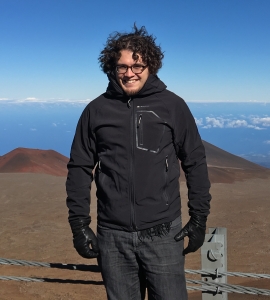
The intriguing object is found in the constellation Pisces, the subject of previous studies that focused on its variability, which has been interpreted as a signature of weather patterns moving into and out of view during its rotation period of 2.4 hours. Now Jonathan Gagné (Carnegie Institution for Science) and an international team of researchers have put new constraints on SIMP0136, finding it to be an object of planetary mass.
Image: Lead author Jonathan Gagné. Credit: Carnegie Institution for Science.
Faint brown dwarfs and cold planetary-mass objects repay close study because as we move just below the deuterium burning mass boundary we are looking at objects much like the gas giants we can observe in exoplanetary systems. But the observations are tricky: Although these borderline objects have physical properties like temperatures, clouds, surface gravities and masses similar to gas giant planets, they also cool down with time, so that their masses cannot be deduced from their effective temperatures alone.
We also need to know about the age of the object we’re looking at, and it is here that the new work helps. Using data from the Near Infrared Spectrometer (NIRSPEC) on the Keck II instrument at Mauna Kea, Gagné and team have identified SIMP0136 as a likely member of the 200 million year old Carina-Near moving group. Moving groups are groups of similarly aged stars moving together through space, offering the possibility of dating any objects that can be associated with them. This faint brown dwarf clearly fits the bill.
Knowing not just the temperature of an object but its age as well, we can calculate its mass. SIMP0136 turns out to be just below the borderline we normally assign to the smallest brown dwarfs. The object has a mass of 12.7 Jupiter masses, plus or minus 1 Jupiter mass.
Assuming that this object is indeed a free-floating planet as opposed to a brown dwarf, it becomes part of a useful category in this mass range. Studying an exoplanetary atmosphere within a distant star system is complicated by the light of the central star, although with closely orbiting gas giants, the possibility of studying starlight filtered through their atmospheres during transits is available. But atmospheric studies of free-floating worlds are easier to conduct in detail, once we have made the key distinction between planetary status and star.

Image: An artist’s conception of SIMP J013656.5+093347, or SIMP0136 for short, which the research team determined is a planetary-like member of a 200-million-year-old group of stars called Carina-Near. Credit: NASA/JPL, slightly modified by Jonathan Gagné.
We’re also dealing with an object that is relatively close to the Sun. At a distance of just under 20 light years, it is the nearest known member of any young stellar moving group and among the 100 nearest systems to the Sun. SIMP0136 turns out to be, the authors add, “…an even more powerful benchmark than previously appreciated and will help [us] to understand weather patterns in gaseous giant atmospheres.”
Cold planetary-mass objects like this one can be found almost anywhere in the sky, since they are not in orbit around a star. That makes them hard to discover. No wonder we’ve only found about twelve objects on the brown dwarf / planet boundary, and most of these have yet to be confirmed by radial velocity measurements. We should have more soon, because this discovery is one of the early results from the BANYAN All-Sky Survey-Ultracool (BASS-Ultracool), which intends to locate similar young brown dwarfs in moving groups, aiming to explore the properties of planetary-mass objects with cold atmospheres.
The paper is Gagné et al., “SIMP J013656.5+093347 is Likely a Planetary-Mass Object in the Carina-Near Moving Group,” accepted at Astrophysical Journal Letters (preprint).

Incentive Trap 2: Calculating Minimum Time to Arrival
When to launch a starship, given that improvements in technology could lead to a much faster ship passing yours enroute? As we saw yesterday, the problem has been attacked anew by René Heller (Max Planck Institute for Solar System Research), who re-examined a 2006 paper from Andrew Kennedy on the matter. Heller defines what he calls ‘the incentive trap’ this way:
The time to reach interstellar targets is potentially larger than a human lifetime, and so the question arises of whether it is currently reasonable to develop the required technology and to launch the probe. Alternatively, one could effectively save time and wait for technological improvements that enable gains in the interstellar travel speed, which could ultimately result in a later launch with an earlier arrival.
All this reminds me of a conversation I had with Greg Matloff, author of the indispensable The Starflight Handbook (Wiley, 1989) about this matter. We were at Marshall Space Flight Center in 2003 and I was compiling notes for my Centauri Dreams book. I had mentioned A. E. van Vogt’s story “Far Centaurus,” originally published in 1944, in which a crew arrives at Alpha Centauri only to find its system inhabited by humans who launched from Earth centuries later. I alluded to this story yesterday.
Calling it a ‘terrific story,’ Matloff discussed it in terms of Robert Forward’s thinking:
“Bob had a couple of concepts of technological advancement. He had a famous plot of the velocity of human beings versus time. And he said if this is true, and you launch a thousand-year ship today, in a century somebody could fly the same mission in a hundred years. Theyre going to be passed and will probably have to go through customs when they get to Alpha Centauri A-2.”
Customs! Clearly, we’d rather not be on the slow starship that is superseded by new technologies. What Heller and Kennedy before him want to do is to figure out a rational way to decide when to launch. If we make assumptions about the exponential growth in speed over time, we can address the question by adding the time we spend waiting for better technology to the time of the actual journey. We can then calculate a minimum value for this figure based on the growth rates we find in our historical data.
This is how Kennedy came up with a minimum figure of 712 years (from 2006) to reach Barnard’s Star, which is about 6 light years away. The figure would include a long period of waiting for technological improvement as well as the time of the journey itself. Kennedy used a 1.4 percent annual growth in speed in arriving at this figure but, examining 211 years of data on historical speed records, Heller finds a higher annual growth, some 4.72 percent.
From the Penydarren steam locomotive of 1804 to Voyager 1, we see a speed growth of about four orders of magnitude. Growth like this maintained for another 112 years leads to 1 percent of lightspeed.
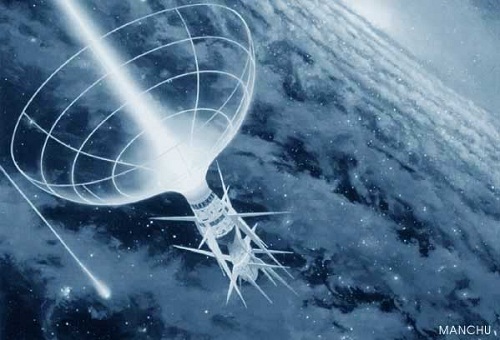
Image: A Bussard ramjet in flight, as imagined for ESA’s Innovative Technologies from Science Fiction project. Credit: ESA/Manchu.
But how consistent should we expect the growth in speed over time to be? Heller points out that the introduction of new technologies invariably leads to jumps in speed. We are now in the early stages of conceptualizing the Breakthrough Starshot project, which could create exactly this kind of disruption in the trend. Starshot aims at reaching 20 percent of lightspeed.
Working with the exponential speed doubling law we began with, we would expect that a speed of 20 percent of c would not be achieved until the year 2191. But if Starshot achieves its goal in the anticipated time frame of several decades, its success would see us reaching interstellar speeds much faster than the trends indicate. Starshot, or a project like it, would if successful exert a transformative effect as a driver for interstellar exploration.
We know that speed doubling laws cannot go on forever as we push toward relativistic speeds (we can’t double values higher than 0.5 c). But as we move toward substantial percentages of the speed of light, we see powerful gains in speed as we increase the kinetic energy beamed to a small lightsail like Starshot’s. Thus Heller also presents a model based on the growth of kinetic energy, noting that today the Three Gorges Dam in China can reach power outputs of 22.5 GW. 100 seconds exposure to a beam this powerful would take a small sail probe to speeds of 7.1 percent of c. Further kinetic energy increases could allow relativistic speeds for at least gram-to-kilogram sized probes within a matter of decades.
Usefully, Heller’s calculations also show when we can stop worrying about wait times altogether. The minimum value for the wait plus travel time disappears for targets that we can reach earlier than a critical travel time which he calls the ‘incentive travel time.’ Considered in both relativistic and non-relativistic models, this figure (assuming a doubling of speed every 15 years) works out to be 21.6 years. In Heller’s words, “…targets that we can reach within about 22 yr of travel are not worth waiting for further speed improvements if speed doubles every 15 yr.”
Thus already short travel times mean there is little point in waiting for future speed improvements. And in terms of current thinking about Alpha Centauri missions, Heller notes that there is a critical interstellar speed above which gains in kinetic energy beamed to the probe would not result in smaller wait plus travel times. His equations result in a value of 19.6 percent of c, an interesting number given that Breakthrough Starshot’s baseline is a probe moving at 20 percent of c, for a 20-year travel time. Thus:
In terms of the optimal interstellar velocity for launch, the most nearby interstellar target α Cen will be worthy of sending a space probe as soon as about 20 % c can be achieved because future technological developments will not reduce the travel time by as much as the waiting time increases. This value is in agreement with the 20 % c proposed by Starshot for a journey to α Cen.
We can push this result into an analysis of stars beyond Alpha Centauri. Heller looks at speeds beyond which further speed improvements would not result in reduced wait times for ten of the nearest bright stars. The assumption here would be that Starshot or alternative technologies would be continuously upgraded according to historical trends. Plugging in that assumption, we wind up with speeds as high as 57 percent of lightspeed for 70 Ophiuchi at 16.6 light years.
Thus the conclusion: If something like Breakthrough Starshot’s beaming capabilities become available within 45 years — and assuming that the kinetic energy transferred to the probes it pushes could be increased at the historical rates traced here — then we can reach all ten of the nearest star systems with an interstellar probe within 100 years from today.
Just for fun let me conclude with a snippet from “Far Centaurus.” Here a ship is approaching the ‘slowboat’ that has just discovered that Alpha Centauri has been reached by humans long before. The crew has just puzzled out what happened:
I was sitting in the control chair an hour later when I saw the glint in the darkness. There was a flash of bright silver, that exploded into size. The next instant, an enormous spaceship had matched our velocity less than a mile away.
Blake and I looked at each other. “Did they say,” I said shakily, “that that ship left its hangar ten minutes ago?”
Blake nodded. ‘They can make the trip from Earth to Centauri in three hours,” he said.
I hadn’t heard that before. Something happened inside my brain. “What!” I shouted. “Why, it’s taken us five hund… ” I stopped. I sat there.
“Three hours!” I whispered. “How could we have forgotten human progress?”
The René Heller paper discussed in the last two posts is “Relativistic Generalization of the Incentive Trap of Interstellar Travel with Application to Breakthrough Starshot” (preprint).

The Incentive Trap: When to Launch a Starship
Richard Trevithick’s name may not be widely known today, but he was an important figure in the history of transportation. A mining engineer from Cornwall, Trevithick (1771-1833) built the first high pressure steam engine, and was able to put it to work on a railway known as the Penydarren because it moved along the tramway of the Penydarren Ironworks, in Merthyr Tydfil, Wales, running 14 kilometers until reaching the canal wharf at Abercynon. The inaugural trip marked the first railway journey hauled by a locomotive, and it proceeded at a blistering 4 kilometers per hour. The year was 1804.

Image: The replica Trevithick locomotive and attendant bar iron bogies at the Welsh Industrial & Maritime Museum in 1983. Credit: National Museum of Wales.
Consider, as René Heller (Max Planck Institute for Solar System Research) does in a new paper, how Trevithick’s accomplishment serves as a kind of bookend for 211 years of historical data on the growth in speed in human-made vehicles from the Penydarren to Voyager 1. The world’s first production car was the Benz Velocipede (1894), whose top speed of 19 kilometers per hour far surpassed the Trevithick railway, but was put to shame by a Stanley Steamer racing car that reached a then incredible 204 kilometers per hour in 1903.
I mused about the nature of speed in a 2013 post called The Velocity of Thought, and Heller’s new paper has me doing it again, though in entirely different directions. A few more waypoints and I’ll explain what I mean. When the Wright Brothers took to the air in 1903, their Wright Flyer first flew at about 11 kilometers per hour, and we began to see how quickly aviation records could be superseded. A Sopwith Camel of World War I vintage could reach 181 kilometers per hour. By 1944, German test pilot Heini Dittmar was able to take a ME-163 rocket plane to 1130 km/h, a number that wouldn’t be reached again for almost ten years.

Image: Typical appearance of a Me-163 Komet after landing, waiting for the airfield’s Scheuch-Schlepper tractor and lifting trailer to tow it back for reattachment of its “dolly” maingear. Credit: Wikimedia Commons.
When we get into space, we can note Voyager 1’s 17 kilometers per second as it leaves the Solar System. The Helios solar probes launched in 1974 and 1976 set the current record at 70.22 km/s. And looking forward, the Solar Probe Plus mission is to perform a close flyby of the Sun, reaching a top heliocentric speed of 195 kilometers per second, which works out to 6.5 × 10 ?4 c. If Breakthrough Starshot realizes its goal, an interstellar lightsail may one day head for Proxima Centauri at fully 20 percent of the speed of light.
Part of what occupies René Heller in his new paper is the exponential growth law we can construct between the 1804 Penydarren locomotive and the 17 kilometers per second of Voyager 1 in 2015. From wind- to steam-driven ships and into the realm of automobiles, then aircraft and, finally, rockets, we can extrapolate speeds that may take us into interstellar probe territory some time in this century or the next. Given that an interstellar mission may take longer than the average human lifetime, we thus need to ask a key question. When do we launch?
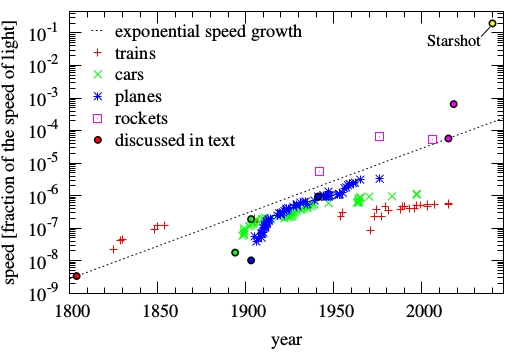
Image: Figure 1 from the Heller paper, showing historical speed records. From the paper: “All these values are symbolized with black-rimmed circles in Figure 1, with additional top speed measurements of trains, cars, planes, and rockets shown with different symbols (see legend). The dashed black line illustrates an exponential growth law connecting the 1 m s ?1 speed of the “Penydarren” steam locomotive in 1804 with the 5.7 × 10 ?5 c Solar System escape speed of Voyager 1 in 2015. Credit: René Heller.
For the problem, a classic in science fiction, is to work out the most efficient timing. If we launch a starship at a particular level in our technology, will it not be caught by a faster ship launched at a much later date? Given sufficient technological improvements, a later launch (incorporating the necessary ‘wait time’) could result in an earlier arrival.
Those who have read A. E. van Vogt’s story “Far Centaurus” will recall precisely that scenario, when an Alpha Centauri mission reaches destination only to find it populated by humans who arrived by faster means. It’s a theme that shows up in Heinlein’s Time for the Stars and many other places.
Heller calls this problem ‘the incentive trap.’ And he refers back to Andrew Kennedy’s 2006 paper, which looked at the problem with the assumption of an exponential growth of the interstellar travel speed. Kennedy was assuming a 1.4 % average growth rate, under which a minimum time to reach Barnard’s Star could be calculated: some 712 years from 2006.
What that means is this: There is a total time that includes the waiting time (waiting for improved technology) and the actual travel time, and we can calculate a minimum value for this total time by using our assumption about the exponential growth of the interstellar travel speed. Calculating the minimum value shows us when we can launch without fear of being overtaken by a faster future probe, in hopes of avoiding that “Far Centaurus” outcome.
But was Kennedy right? Heller’s own take on the incentive trap takes into account the possibility that Breakthrough Starshot may achieve a velocity of 20 percent of lightspeed within several decades, an outcome that would, in Heller’s words, “…fundamentally change both the assumptions and the implications of the incentive trap because the speed doubling and the compounded annual speed growth laws would collapse as v approaches c.” And whatever happens with Breakthrough Starshot, the speed growth of human-made vehicles turns out to be much faster than previously believed.
Intriguing results flow out of Heller’s re-examination of what Kennedy had called the ‘wait equation,’ and tomorrow I want to go deeper into the paper to explain how the scientist uses exponential growth law models to show us a velocity which, once we have attained it, will no longer be subject to the incentive trap of faster, later technologies. The results are surprising, particularly if Breakthrough Starshot achieves its goal in the planned 30 years. The implications for our reaching well beyond Alpha Centauri, as we’ll see, are striking.
The Heller paper is “Relativistic Generalization of the Incentive Trap of Interstellar Travel with Application to Breakthrough Starshot” (preprint). The Kennedy paper is “Interstellar Travel: The Wait Calculation and the Incentive Trap of Progress,” Journal of the British Interplanetary Society Vol. 59, No. 7 (July, 2006), pp. 239-247.

Remembering the Sail Mission to Halley’s Comet
Some years back I had the pleasure of asking Lou Friedman about the solar sail he, Bruce Murray and Carl Sagan championed at the Jet Propulsion Laboratory in the 1970s. NASA had hopes of reaching Halley’s Comet with a rendezvous mission in 1986. Halley’s closest approach that year would be 0.42 AU, but the comet was on the opposite side of the Sun from the Earth, making ground viewing less than impressive. Although the JPL mission did not fly, the Soviet Vega 1 and Vega 2 conducted flybys and the European Space Agency’s Giotto probe, as well as the Japanese Suisei and Sakigake, made up an investigative ‘armada.’
But the abortive NASA concept has always stuck in my mind because it seemed so far ahead of its time. Friedman acknowledged as much in our short conversation, saying that while the ideas were sound, the solar sail technology wasn’t ready for the ambitious uses planned for it. Friedman, of course, would go on to become a founder of The Planetary Society and its long-time executive director, championing sail concepts like Cosmos 1 and the LightSail 1 and LightSail 2 spacecraft. He’s also the author of one of the earliest books on this form of propulsion, Starsailing: Solar Sails and Interstellar Travel (Wiley, 1988).
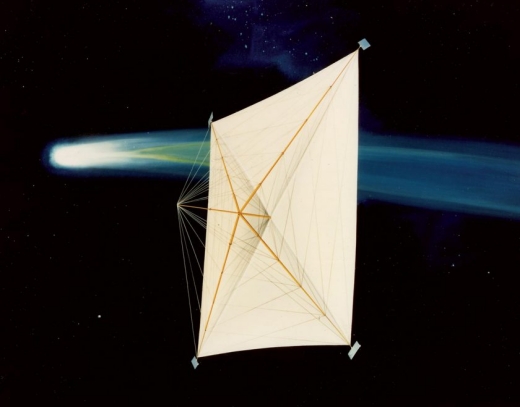
Image: This artist’s concept shows an 850-by-850-meter wide solar sail spacecraft approaching Halley’s Comet. Credit: JPL-Caltech.
Starsailing is a slim but compelling book that should be on your shelf if you’re interested in these concepts and their history. Although out of print, it’s readily available through Amazon or eBay sellers. Meanwhile, The Planetary Society’s Jason Davis has made a cache of documents from engineer Carl Berglund available that cover many details of the mission. The self-deprecating Berglund, who refers to himself as a only a ‘cog engineer’ at JPL, joined the project at about the same time that Carl Sagan displayed a model of a solar sail on The Tonight Show, and while he only spent several months working on the sail, his JPL documents remind us just how ambitious the JPL concept had become.
Not one but two designs were under consideration, the first a square sail 850 meters to the side. Bear in mind that JAXA’s IKAROS sail, the largest we’ve yet deployed in space, runs 14 meters to the side. A second design was a heliogyro, a device with long blades aptly described by Davis as looking like “two ceiling fans stacked on top of each other.” There would be 12 sail blades in all, 6 per level, and here the dimensions really are staggering. Each blade was to be 8 meters wide and 6.2 kilometers long, making for 0.6 square kilometers of sail material in a spinning blade configuration that would complete a rotation every 200 seconds.
Let’s take a closer look at that heliogyro, as it’s a design we’ve yet to see in space. In a summary document written in early 1977, Friedman describes the concept this way:
The Heliogyro presents a large reflective area to create the Solar Sail by the use of very long, thin blades, much like helicopter blades, which are used both to reflect the solar pressure and to control the vehicle. The basic concept is to spin the vehicle and to use the centrifugal force to support and stiffen the blade, and to keep it flat relative to the Sun. The spin of the vehicle also aids in the deployment of the Heliogyro blades. In addition, the blades can be pitch controlled, as with a helicopter, in order to provide attitude control and to turn the vehicle so that the reflective plane can have different orientations with respect to the Sun. Thus, the vehicle can either fly in toward the Sun or fly out into the Solar System.
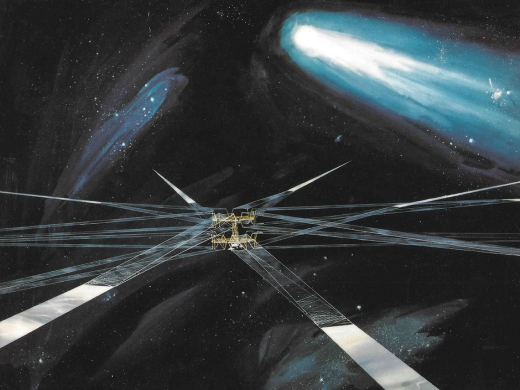
Image: Halley’s Comet Heliogyro Design. Credit: JPL-Caltech, 1976).
The document depicts a deployment in which the blades unroll from their storage rollers with the help of spin thrusters that are jettisoned after the first 100 meters. After this, solar torque on the blades continues to spin up the vehicle and, over the course of a two-week period, each of the blades unfurls to its full six-kilometer length. Friedman sees the major advantage of the heliogyro as being the support provided by its centrifugal spin, which eliminates the need for a stiffening structure and provides for higher performance than a square sail. The major uncertainty: The dynamics of a 6 kilometer long spinning blade in deep space.
As to sail materials, Friedman describes blades “made out of .1 mil plastic material, with a surface density of less than 4 grams per square meter,” with surface coatings on the back to allow the sail to work at high temperatures close to the Sun. An internal newsletter from Friedman on April 13 of 1977 looks at materials requirements and notes three film candidates: Kapton, Ciba-Geigy polyimid and PBI conformal coated with parylene. These films were specified in the 1.5 to 2.5 µm range in thickness. By way of comparison, the later IKAROS sail was made of a 7.5-micrometer thick sheet of polyimide with thin-film solar cells.
Whichever sail design got the nod, the plan was to launch from the Space Shuttle followed by an inward spiral toward the Sun to about 0.25 AU, after which the sail would leave the ecliptic as it reached speeds in the range of 55 kilometers per second, eventually matching the trajectory of Halley’s Comet in 1986. The sail would be jettisoned at the comet, allowing the craft to use maneuvering thrusters for its operations there, which were to include a landing on the comet itself at the end of the mission.
The heliogyro option ended up winning the competition over the square sail, but sail concepts themselves lost out to solar electrical power, an ion propulsion technology like that used in the Dawn spacecraft. But funding problems and a slower than expected Space Shuttle mission schedule brought all thoughts of a Halley’s Comet mission from NASA to an untimely end.
Friedman writes in Starsailing that in the 1977 to 1978 period, the JPL team produced its design study for the mission with the help of half a dozen industrial contractors and support from the NASA Ames and Langley research centers. It was solid work that showed how viable solar sailing could be as a method of propulsion. He also describes the outcome of the Halley’s mission design:
Despite the confidence of the technical team and the completion of a valid preliminary design, however, the NASA management was conservative. They felt the design and implementation could not be accomplished in time for a 1981 launch to Halley’s Comet. NASA also thought that the technology for solar sailing was not sufficiently ‘mature’ to be implemented on a near-term space project. Indeed, the Halley mission requirements were severe — and even our willingness to incur great risk for great gain was insufficient to overcome management’s skepticism. And as it turned out, the conservatives were right, we could not have done it. It was a self-fulfilling prophecy.
But what splendid work fleshing out solar sail concepts that we continue to explore and find viable. As mentioned above, The Planetary Society’s Lightsail 2 carries the idea forward, and may become the second solar sail to demonstrate controlled flight in space. JAXA, meanwhile, has plans for an IKAROS follow-on mission to study the Jupiter Trojans.
All of that helps us keep the documents Jason Davis has collected online in perspective, a valuable look at work that has contributed to our understanding of a key propulsion concept. Looking through these documents reminds me of days I spent in 2003 going through the Robert Forward notebooks stored at the University of Alabama at Huntsville. That sense of history in the making — or in this case, history that might have been — is palpable as we consider who developed these documents and handled them at the key JPL meetings.
Image: Dig into documents like this online to see a mission design emerging. Credit: Carl Berglund / The Planetary Society / Louis Friedman.
Friedman includes in one of the newsletters a March 14, 1977 article in Science covering the JPL sail work. It reminds us how exotic sail ideas were at the time. Quoting from it:
[The sail] might also effectively open up the rest of the Solar System to manned spaceflights that cannot be considered now because of tremendous costs. JPL’s Louis Friedman thinks that a flotilla of sunjammers could embark on a manned Mars mission by the end of the century, and foresees a day when fleets of huge kites shuttle through space — as the East Indiamen plied the oceans three centuries ago — making regular stops at Mercury, Venus, Mars or the asteroids.
Exotic ideas indeed, but slowly, surely, beginning to take shape. For more background, see Davis’ Sailing to the World’s Most Famous Comet.

Starship Congress 2017
I had thought at the end of last year that 2017 would be a year of few conferences held by the various interstellar organizations. In fact, the Tennessee Valley Interstellar Workshop was the only one I was sure would occur, a meeting I knew about because it was being held in partnership with the Tau Zero Foundation as well as Starship Century. Since then, we’ve had news of the Foundations of Interstellar Studies Workshop sponsored by the Initiative for Interstellar Studies. Background on these two, including details on registration and submitting papers, can be found in Interstellar Conference News.
Now the details of a late summer meeting to be held by Icarus Interstellar have emerged. Based on the group’s online description, this is to be the third in the Starship Congress meetings, the first of which I attended in Dallas in 2013. A second was held at Drexel University in Philadelphia in 2015.

Image: The 2013 Starship Congress in Dallas was a great meeting. In front at the far right, I am easy to spot because I am one of the few in the group shot wearing a light-colored jacket. It’s hard to make out the faces here, but I think that’s Pat Galea to my right, and my son Miles next to Pat. Rachel Armstrong is in front at the left, and although it’s too tricky to identify everyone, I do see Al Jackson, Jim Benford, Eric Davis, Phil Lubin and many other friends. Credit: Icarus Interstellar.
The focus of Starship Congress 2017 is to be the Moon, an unusual choice for a deep space organization, but Icarus asks a good question: “How can we hope to gain experience living, building and working off planet without systematically capitalizing on our nearest, most accessible celestial body?”
It’s a question with both near- and far-term resonances, for we’re also talking about more or less bypassing lunar resources and going straight for Mars, an idea that pulls me up short given our lack of knowledge about human physiology beyond low Earth orbit. We can study human factors in space-based laboratories, and I know that Robert Hampson (Wake Forest School of Medicine) continues to push for a dedicated facility to study biomedical matters outside Earth’s magnetosphere. But dedicated facilities on the Moon should be a part of this.
But let me give you the Icarus Interstellar view, in the form of the call for papers for Starship Congress 2017, reproduced here verbatim.
———————————————————————————————-
Call for Papers
If we want to see interstellar accomplishments in our lifetime we need a staging area in space and we need to be able to get our people and our machines up there.
We dedicate each day of our meeting to addressing actions towards making Space a Place for Everybody and welcome the community to submit papers/presentations for each of the following:
Day 1: The Moon as a Stepping Stone to the Stars (MOON):
- Living on the Moon: Lunar city planning, lunar resources, construction, power, water, radiation shielding, living and working, economy, sociology.
- Planetary, Deep Space and Interstellar exploration centered around the Moon: Spacecraft Shipyards, Lunar Space elevators, Planetary and Deep Space remote sensing Telescopes.
Day 2: Massive Space Access Project (MSAP) aka “Children in Space”:
- Earth to Moon and back: transport vehicles and systems, global logistics, tourism, legal and safety considerations, military presence.
- Children in Space: Space education, youth space education program, people with disabilities in space, when will we send the first child to space? (when children can go to the moon, everyone will want to go!)
Day 3: Massive Space Based Infrastructure (MSBI):
- Space and Lunar Industry: Space stations, mining stations, space services, telecommunications, zero gravity and lunar gravity manufacturing technology development.
- Space arts, sports, community and culture: everything not traditionally considered infrastructure, but which is necessary for humans to live, love and learn on the Moon and in space.
Submit abstracts to starshipcongress@icarusinterstellar.org by Monday, July 3rd, 2017. Papers will be approved on a rolling basis with the final agenda shared on Monday, July 10th, 2017.
Conference Registration
Register for Starship Congress 2017 here.
Hotel Registration
Starship Congress will be held at:
HYATT REGENCY MONTEREY HOTEL & SPA
One Old Golf Course Rd, Monterey, CA 93940, USA
T +1.831.657.6541 Email: megan.whetton@hyatt.com
monterey.hyatt.com
————————————————————————————————
If you’re interested in presenting at the conference, abstracts can be submitted to starshipcongress@icarusinterstellar.org by Monday, July 3rd, 2017. Papers will be approved on a rolling basis with the final agenda shared on Monday, July 10th, 2017.

